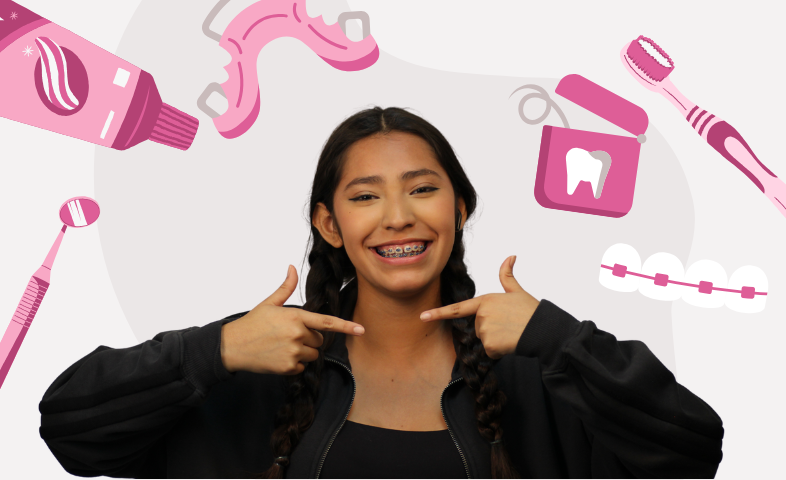How to choose between Invisalign or braces

Thinking about straightening your teeth? You’re not alone. Many adults and teens want a healthier, more confident smile but feel uncertain about which option to choose: Invisalign or traditional braces. Both can give you the results you’re hoping for, what matters is finding the treatment that fits your lifestyle.
At Fabulous Dentistry, we’re here to make that choice easier. Let’s walk through what each option offers, what they mean for you, and why orthodontics is about much more than looks.
What is Invisalign?
Invisalign uses a series of nearly invisible clear aligners to gently move your teeth into place.
- Discreet and nearly invisible.
- No food adjustments necessary.
- More comfortable than traditional braces.
What are traditional braces?
Braces use metal or ceramic brackets to gradually shift teeth into alignment.
- Highly effective for complex bite issues.
- More affordable than Invisalign.
- Always working since they’re fixed in place.
- Visible on your teeth but reliable for even the most challenging cases.
It’s not just about looks
Orthodontic treatment isn’t just about a picture-perfect smile. Straighter teeth improve your overall health and comfort too:
- Better bite and chewing reduces jaw pain and strain.
- Easier oral hygiene as teeth are simpler to brush and floss, lowering the risk of gum disease.
- Long-term health improvements for wear, tension headaches, and prevention of future dental problems.
And of course, the emotional shift is powerful. Imagine walking into a meeting, smiling in photos, or laughing with loved ones without hesitation. Confidence is a health benefit too.
Invisalign vs. Braces
| Feature | Invisalign (Clear Aligners) | Traditional Braces |
|---|---|---|
| Appearance | Nearly invisible | Metal or ceramic brackets |
| Comfort | Smooth, no wires | May cause irritation from wires |
| Treatment Time | 12–18 months on average | 18–24 months on average |
| Lifestyle | Removable for meals & brushing | Always fixed in place |
| Cost | $4,000–$7,500 | $3,000–$7,000 |
| Appointments | Every 6–10 weeks | Every 4–8 weeks |
| Maintenance | Brush after meals; wear 20–22 hrs | Extra cleaning; avoid sticky foods |
| Diet | No restrictions (remove to eat) | Avoid sticky, crunchy, hard foods |
| Speech Impact | Minor adjustment initially | Possible short-term adjustment |
We can help you make the decision
- Want a discreet look? → Choose Invisalign
- Need treatment for severe bite issues? → Choose Braces
- Is budget your top concern? → Choose Braces
- Want to eat anything you like during treatment? → Choose Invisalign
- Worried you’ll forget to wear aligners? → Choose Braces
Evidence-based outcomes
- Effectiveness: Both Invisalign and braces achieve similar results for mild to moderate cases. Braces are more effective for severe misalignments.
- Timeline: Invisalign averages 12–18 months; braces 18–24 months, depending on complexity.
- Satisfaction: Studies show high patient satisfaction with both treatments, though Invisalign patients often report greater comfort and convenience, while braces patients appreciate reliability.
- Retention: Regardless of treatment, retainers are required after treatment to maintain results.
Getting the most out of your treatment
Invisalign
- Wear aligners 20–22 hours daily.
- Brush after every meal.
- Keep aligners in a case when not in use.
- If you lose one, contact your dentist right away for a replacement.
Braces
- Brush carefully around brackets and wires.
- Avoid sticky, chewy, or hard foods.
- Use wax to ease irritation.
- For broken wires or loose brackets, call your dentist promptly.
Tip: An electric toothbrush and floss threaders can make cleaning much easier with braces.
Suitability by age
- Teens: Braces are often preferred for compliance, though Invisalign Teen is available.
- Adults: Invisalign fits well for professionals and busy lifestyles.
- Complex cases: Braces are better for severe crowding, bite problems, or jaw corrections.
- Forgetful patients: Braces may be better if you worry about keeping aligners in.
FAQs
How long does treatment take?
Invisalign: 12–18 months on average. Braces: 18–24 months.
Can you switch from one treatment to another?
Yes. Some patients begin with braces for complex corrections, then switch to Invisalign for finishing.
Is there a risk of relapse?
Yes. Retainers are essential for both options to keep teeth in their new position.
What’s next?
Choosing between Invisalign and braces comes down to your priorities, lifestyle, and goals:
- Do you want something invisible? Invisalign.
- Do you need major corrections? Braces.
- Is cost the biggest factor? Braces.
- Are you committed to wearing aligners? Invisalign.
Both options can transform your smile and your confidence. You deserve to feel fabulous—and we’ll help you get there.
